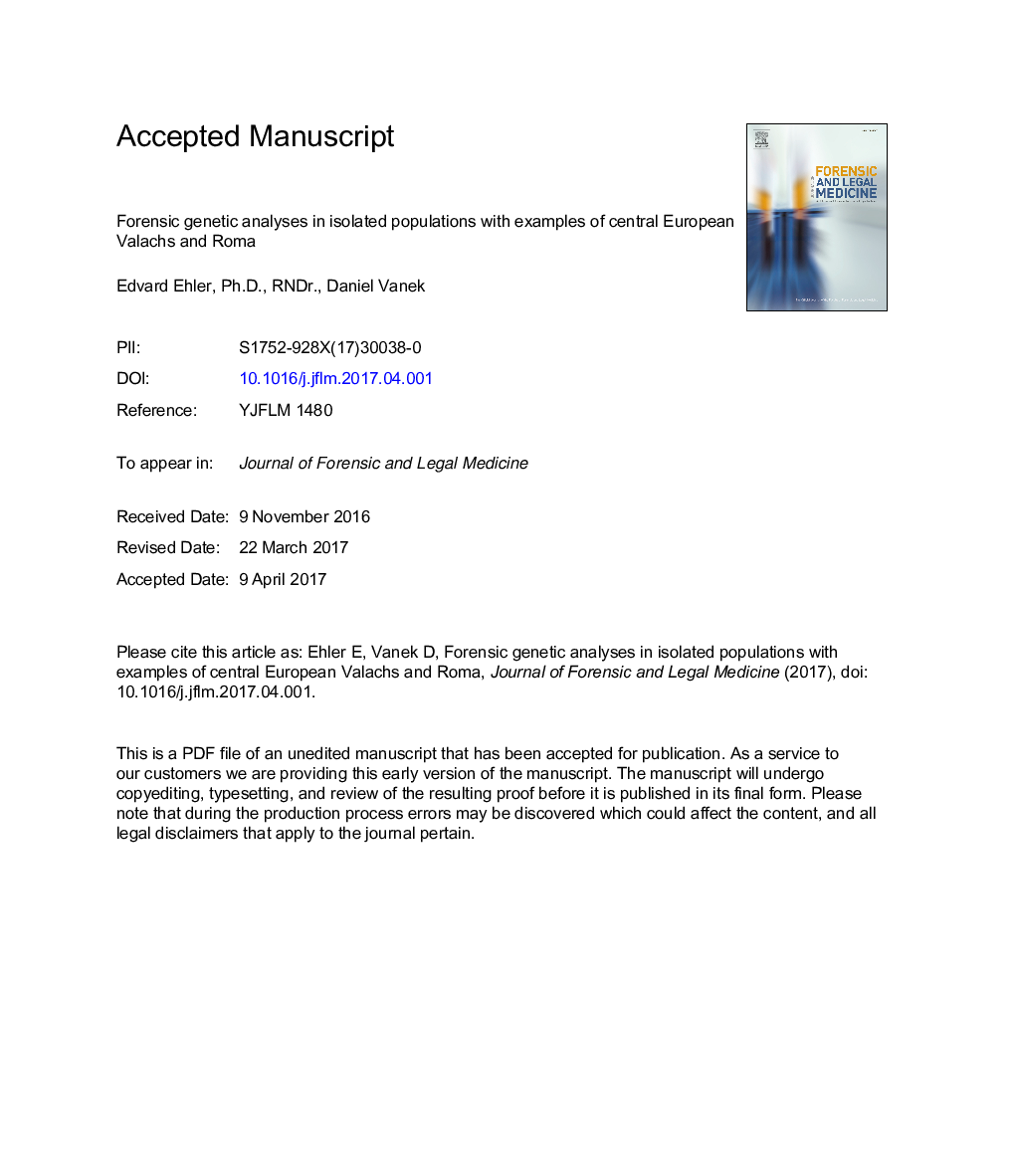| Article ID | Journal | Published Year | Pages | File Type |
|---|---|---|---|---|
| 4760708 | Journal of Forensic and Legal Medicine | 2017 | 33 Pages |
Abstract
Isolated populations present a constant threat to the correctness of forensic genetic casework. In this review article we present several examples of how analyzing samples from isolated populations can bias the results of the forensic statistics and analyses. We select our examples from isolated populations from central and southeastern Europe, namely the Valachs and the European Roma. We also provide the reader with general strategies and principles to improve the laboratory practice (best practice) and reporting of samples from supposedly isolated populations. These include reporting the precise population data used for computing the forensic statistics, using the appropriate θ correction factor for calculating allele frequencies, typing ancestry informative markers in samples of unknown or uncertain ethnicity and establishing ethnic-specific forensic databases.
Related Topics
Life Sciences
Biochemistry, Genetics and Molecular Biology
Genetics
Authors
Edvard Ph.D., Daniel Ph.D.,
